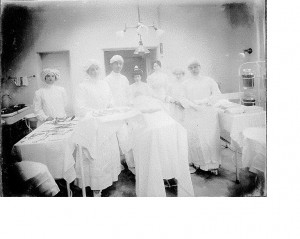Have you ever experienced sudden abdominal pain and wondered if it might be gallstones?
Gallstones form in the gall bladder, located just under the liver, and may cause no signs or symptoms. However, if a gallstone lodges in a bile duct, it could cause a blockage. Gallstone pain may last several minutes to a few hours and symptoms may include:
- Sudden and rapidly intensifying pain in the upper right portion of your abdomen
- Sudden and rapidly intensifying pain in the center of your abdomen, just below your breastbone
- Back pain between your shoulder blades
- Pain in your right shoulder
Make an appointment with your doctor if you experience any of these signs or symptoms. Seek immediate care if you are experiencing:
- Abdominal pain so intense that you can’t sit still or find a comfortable position
- Yellowing of your skin and the whites of your eyes
- High fever with chills
Laparoscopic surgery to remove the gallbladder, called a cholecystectomy, is one of the most commonly performed surgical procedures in the United States, and is the treatment of choice for gallstones that cause moderate to severe pain. Symptoms usually do not return after the gallbladder has been removed. In a small number of cases, surgery may be done to prevent complications of gallstones.
The surgical team at Flushing Hospital Medical Center offers laparoscopic gallbladder removal using the da Vinci robotic system. Using the robot allows for faster healing time, less scarring and shorter hospital stays.
For an appointment with a gastroenterologist, please contact the Ambulatory Care Department at 718-670-5486.
All content of this newsletter is intended for general information purposes only and is not intended or implied to be a substitute for professional medical advice, diagnosis or treatment. Please consult a medical professional before adopting any of the suggestions on this page. You must never disregard professional medical advice or delay seeking medical treatment based upon any content of this newsletter. PROMPTLY CONSULT YOUR PHYSICIAN OR CALL 911 IF YOU BELIEVE YOU HAVE A MEDICAL EMERGENCY.









